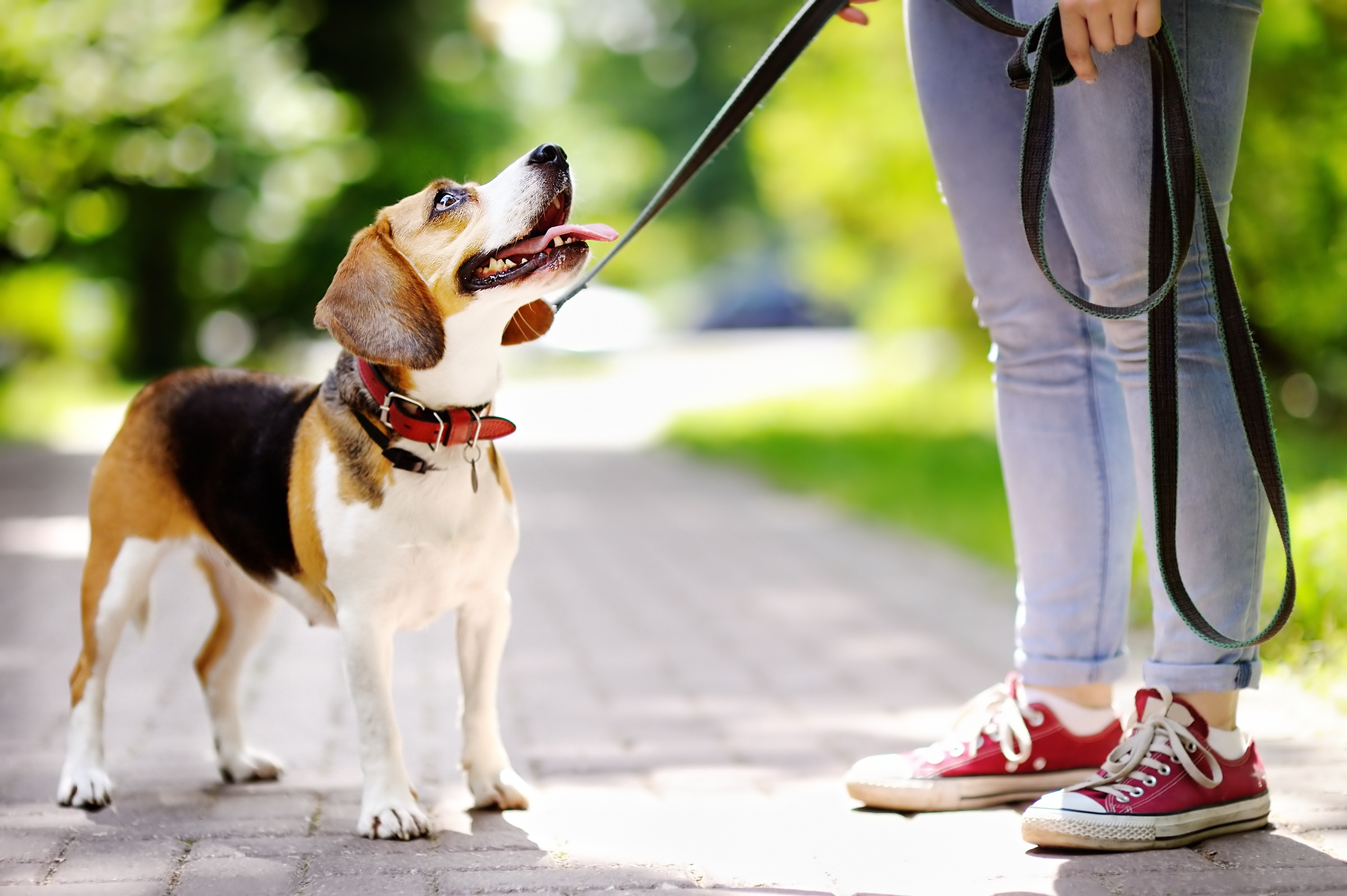If You Can’t Stand the Heat, Neither Can Your Pet

It happened so quickly and so unexpectedly that at first Brenda Stevens didn’t realize it was happening at all.
Stevens, a general practice clinical professor at the NC State College of Veterinary Medicine, was outside playing fetch with her standard poodle, Olive, throwing her favorite tennis ball. It was a sunny, comfortable spring day.
“I looked at her and she slowed down,” said Stevens. “She was coming back to me with her ball, her head lowered and the next thing you know, she’s laying on her side, heavily panting.”
Stevens did everything she needed to do. She stopped playing with her, got her to the shade and gave her some water. After about 10 minutes, her dog had cooled down. It’s something Stevens will never forget.
“That was a very eye-opening thing to me, that we need to be sure that we are the ones saying, no more play. Come on, we’ve got to go inside,” said Stevens. “That had never happened before with her, and it will never happen again.”
Humans like to take a break from the outdoors in the depths of summer; dogs don’t have that option. They still need walks and crave playtime, but heat exhaustion is a risk. So we talked to Stevens about what owners should know — everything from pavement temperatures and best times of day for walks to heat exhaustion warning signs.
“Your dog wants to run, your dog wants to play, your dog wants to fetch that ball,” said Stevens. “It’s our job to limit the activity so they don’t get hurt.”
It’s the heat and the humidity
Humans sweat to cool off, but dogs don’t sweat — they pant to remove the moisture of a hot, sticky day.
“If they’re breathing in heavily moisturized air, which is what humidity is, they’re less effective at getting rid of that moisture,” said Stevens. Add in a 90-degree day with high humidity and that’s two things working against your pup.
Stevens recommends walking dogs either in the morning or night to stem overheating. There’s no such thing as a temperature limit, though. Dogs can overheat in 75 degrees and 95 degrees. So apart from choosing cooler times of day, owners should try walking dogs on the cooler grass as much as possible and taking breaks in the shade.
“If you go out and it’s too hot for you to exercise vigorously, it’s probably too hot for your dog to exercise vigorously,” said Stevens.
If it’s ridiculously steamy outside, Stevens said, maybe limit a walk to about 10 minutes. And don’t forget to offer your dog water at least every 10 to 15 minutes.
The five-second test
One of the best ways you can predict a dog’s tolerance to an outdoor walk, said Stevens, is to place the back of your hand on the pavement or the sidewalk. If you can’t let your hand sit there for five to seven seconds, it’s too hot for your pet’s paws.
Steven also mentions an alarming breakdown of what the air temperature means for the asphalt temperature. If the air temperature is 77 degrees, the asphalt can be 125 degrees. If the air temperature is 87 degrees, the asphalt could reach 143 degrees.
“Think about how hot that is,” Stevens said.
And don’t forget: If you take your buddy with you on a beach trip, hot sand can be just as dangerous as sizzling asphalt.

Overheating warning signs
The main thing to watch for is panting, said Stevens. If your dog is panting excessively, get them in the shade and and give them cool water — not ice water, though, which can cause your dog’s blood vessels to constrict and not expel heat as effectively.
Other things to look out for: a tongue that’s starting to change color, either getting purple or deep red. Also, if your dog starts drooling and it’s a dryer, thicker drool, it’s time to stop all activity.
When to take extra action
Heat exhaustion can happen quickly. Your first mission is to get your dog to cool down as much as possible. If you’re concerned the heat exhaustion is an emergency, Stevens recommends taking your dog’s temperature if possible.
If after a cool drink or bath, or a rest in the shade, and panting does not stop, take your dog’s temperature.
“A normal dog’s temperature is about 101 to 102 degrees,” she said. “At about 103, you’re looking at heat exhaustion. When you start getting to 104 and 105, especially 105, you’re looking at potential for heat stroke.”
If your dog looks very weak or is vomiting, take them to the vet immediately.
What can heat stroke do?
For one, it can be fatal.
Dogs with heat stroke can go into kidney failure. They can have gastrointestinal bleeding, seizures and other neurological issues. They can also develop acute respiratory distress syndrome, inflammation of the lungs that causes respiratory arrest — not being able to breathe.
“It can be very, very serious,” said Stevens. “But if it’s caught early and we can get their temperature down, it may be just that your dog has a little bit of diarrhea for a couple of days. Each situation is unique.”
Shape and size
Heat has a greater impact on dogs with smaller, snub noses — pugs, bulldogs, Boston terriers — than dogs with larger nasal passages, such as German shepherds. Small nostrils, along with the typical accompanying overlong soft palate and smaller trachea, means that air cannot move back and forth as easily as it should.
Weight impacts things, too. An overweight animal’s fatty tissue puts pressure on their airway so that they have to expend more energy to take a very deep breath, said Stevens.
Another factor: age.
“Puppies and kittens can’t thermoregulate quite as well as adult dogs,” said Stevens. “Older dogs may not be able to expel heat in the normal way and are also more likely to have other conditions. Their kidneys or cardiovascular system may not be working as well as they did five years ago.”
And yes, cats can get heat exhaustion, too, said Stevens. “The clinical signs would be exactly the same as a dog,” she said. “We just don’t see it that much in cats.”
But it can happen to any dog
“Your dog wants to run, your dog wants to play, your dog wants to fetch that ball,” said Stevens. “It’s our job to limit the activity so they don’t get hurt.”
The NC State Veterinary Hospital’s small animal emergency and critical care center is open 24/7, 365 days a year. For more information, go here.
~Jordan Bartel/NC State Veterinary Medicine


